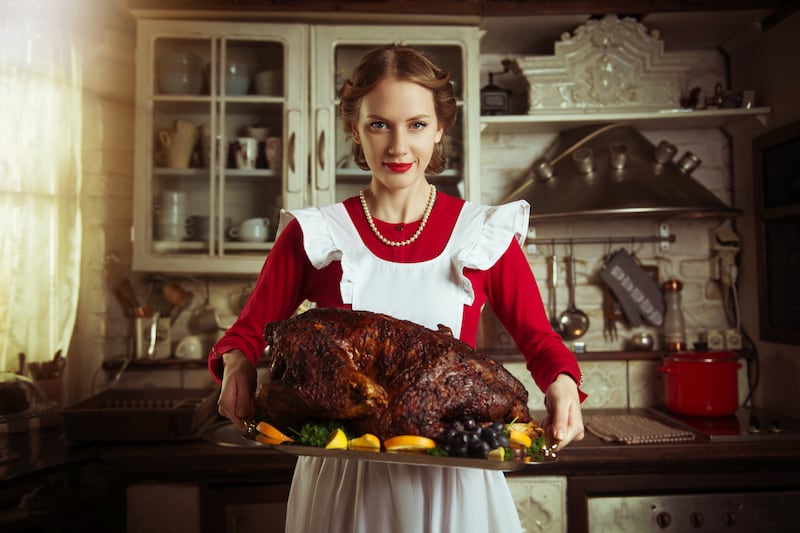This chaffinch grew an impressive handlebar moustache as he gathered hair from our dog for his nest. Rory McGuinn, Co Galway
You are indeed right that the collected dog hairs in the bird’s bill look like an impressive set of whiskers. Many different bird species collect hairs to make a soft lining to their nest. But this bird is neither male nor a chaffinch: it is a female bullfinch, which, typical of females who do all the work, has much duller colours than the flamboyant male. She is the one who builds the nest where will sit and incubate four or five eggs for a whole fortnight while being fed by the male. No wonder she wants a bit of comfort.
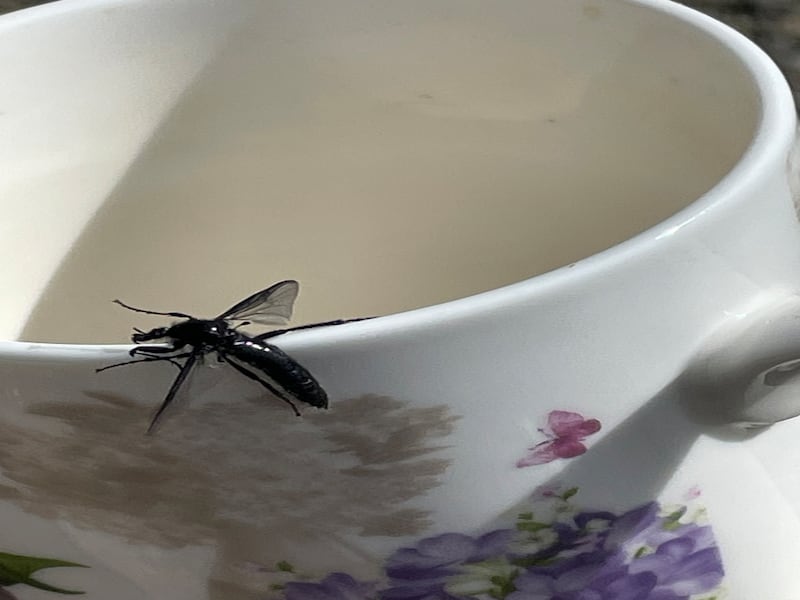
This is an insect not seen before in the garden. Could you please identify it? Maura Howley, Co Meath
This is St Mark’s fly, Bibio marci, so called because it appears around St Mark’s Day (April 25th). Males fly sluggishly with long dangling legs in swarms, looking for females who are coyly sitting on the grass waiting for a likely male to pass overhead. Mating will then take place in the air. Your photo is of a female, which has much smaller eyes than the male. Adult St Mark’s flies are important spring pollinators, with a particular penchant for the nectar of fruit tree flowers and hawthorn blossom.
RM Block
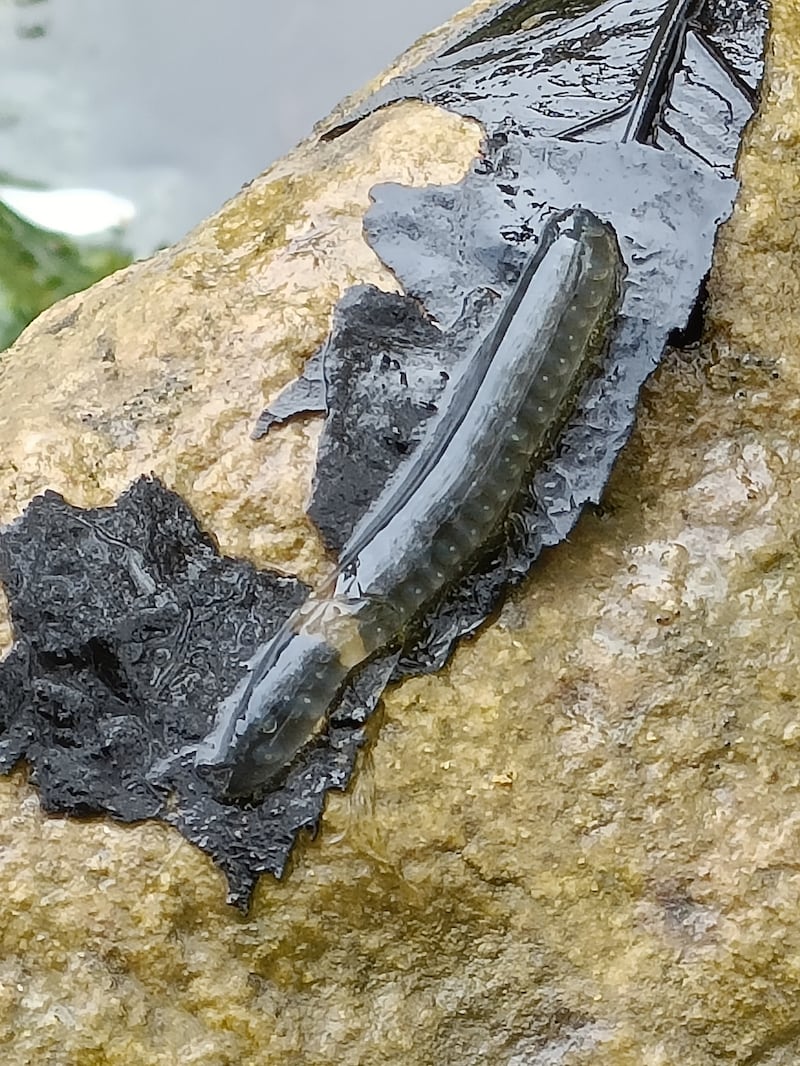
I’ve found several of these transparent, slightly striped cylindrical jelly blobs under dead leaves in my garden pond. They’re about 30mm. What are they? Brian McGee, Co Donegal
These are the eggs of the great pond snail, Lymnaea stagnalis. This species is hermaphrodite – every single one fertilises its own eggs, which it lays in a ribbon-like gelatinous mass attached to a surface The snail lives for a year feeding on algae and the remains of other pond creatures. It needs to surface in order to breathe, which it does by crawling along the pond surface film upside-down and opening its air chamber to take in a fresh gulp of air.
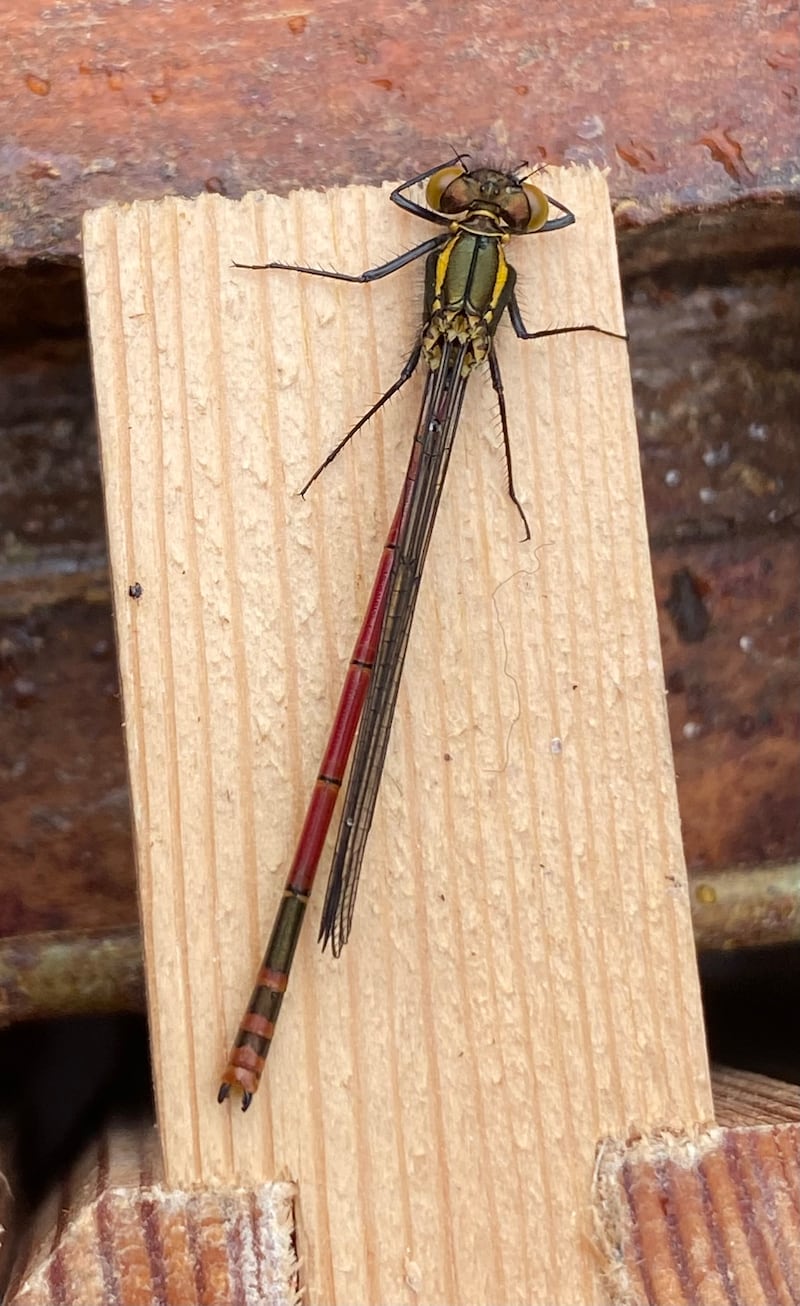
I found this insect resting on a piece of wood in my haggart in mid Tipperary on April 21st. I presume it’s a dragon/damselfly. If so, is it the common darter? The house is not immediately close to water. John Mason, Co Tipperary
Yes, it is a damselfly – Pyrrhosoma nymphula, the large red damselfly. It is the only red damselfly in Ireland; the darter that you refer to, belongs to the larger, stouter group of red dragonflies, which don’t appear until July at least. This is a female of a species, which typically emerges in April and is the first of this whole group (the odonata) on the wing. It prefers acidic water and can live on very small streams indeed – even the merest trickles. There is surely some stream nearby that forms suitable habitat, as this is a common and widespread species.
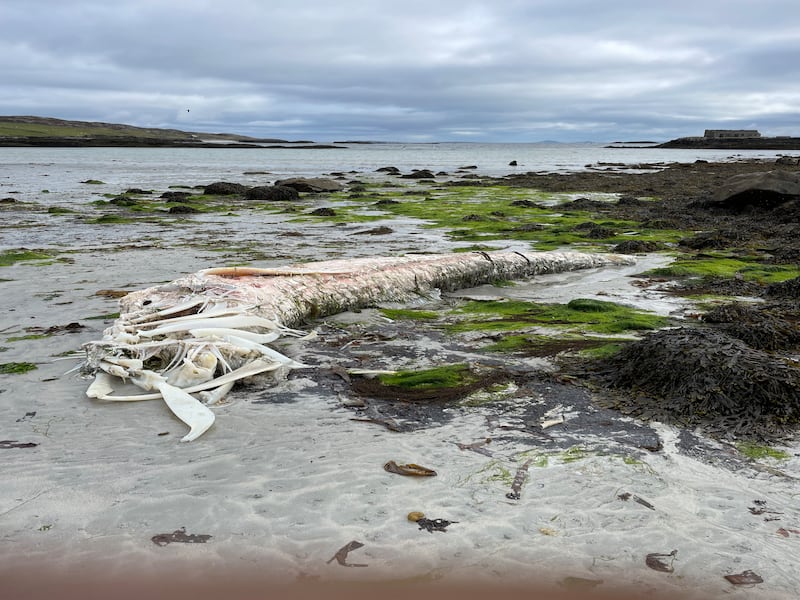
I’d be grateful if you could identify this unfortunate creature, which washed up on the rocks on the east side of Inishbofin. We were wondering if it was once a basking shark? Jack O’Farrell, Co Galway
It was indeed once a basking shark, but now it is very much aimsir chaite. Basking sharks occur all along our western coasts in summer. They arrived in late March this year following the plankton bearing currents. This one was already dead when it washed up. This may not be case for dolphins and whales, which may in fact be beached while still alive. There are national recording schemes of stranded cetaceans run by the Irish Whale and Dolphin Group, and all such strandings live or dead should be reported to iwdg.ie.
Please submit your nature query, observation, or photo with a location, via irishtimes.com/eyeonnature
















